Summer is coming to an end and it is time put away your swimming trunks and take out the shirts. Soften the blow by heading to the office in style.
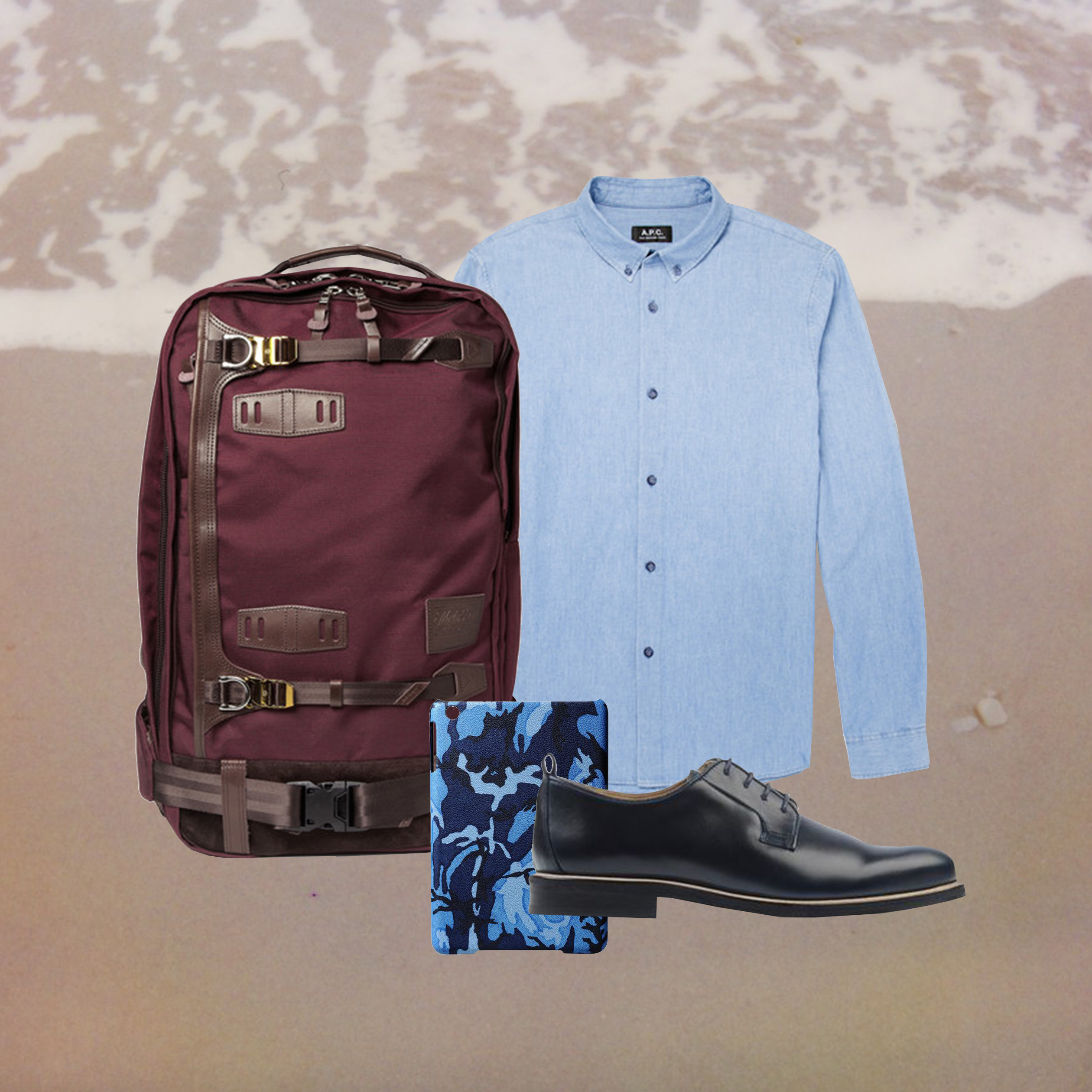
Styling by Vanessa Cocchiaro
Summer is coming to an end and it is time put away your swimming trunks and take out the shirts. Soften the blow by heading to the office in style.

Styling by Vanessa Cocchiaro
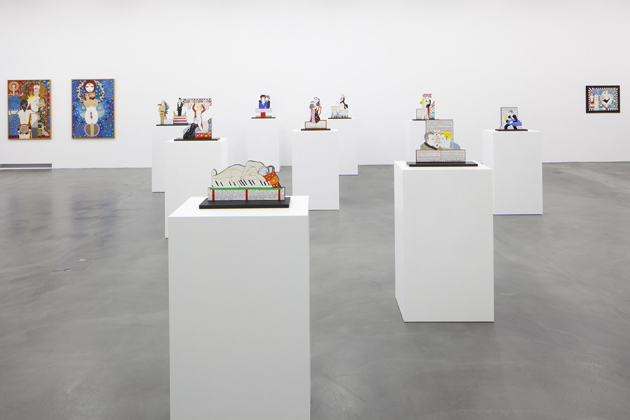
It’s never too late: after leading a career in the background, Dorothy Iannone (b. 1933 in Boston, lives and works in Berlin) finally has got the deserved recognition and her controversial and long-term unappreciated art has finally been rediscovered. She had to go beyond the censor climate of the 60s and 70s and challenge the politically correct 80s and 90s up to last years, before starting to gain major attention she was long overdue. It was just the 2009 when the New Museum in New York arranged the artist’s first exhibition at a US museum entitled “Dorothy Iannone: Lioness” (she was already 75 years old!), then other international art institutions such as the Camden Art Centre in London and the Berlinishe Galerie, Museum of Modert Art of Berlin paid tribute to Iannone’s oeuvre, coming to present day at the renowned Migros Museum, which just opened her retrospective: “Censorship And The Irrepressible Drive Toward Love And Divinity”.
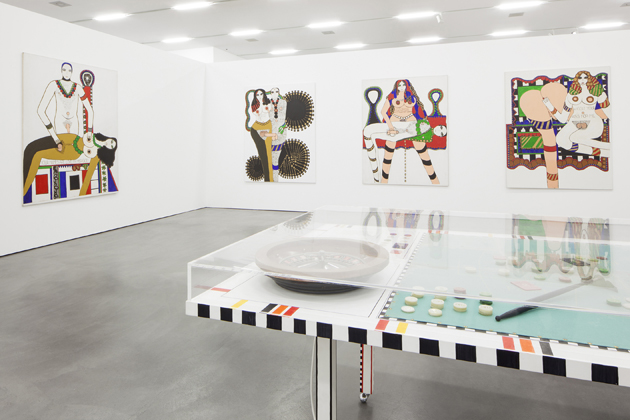
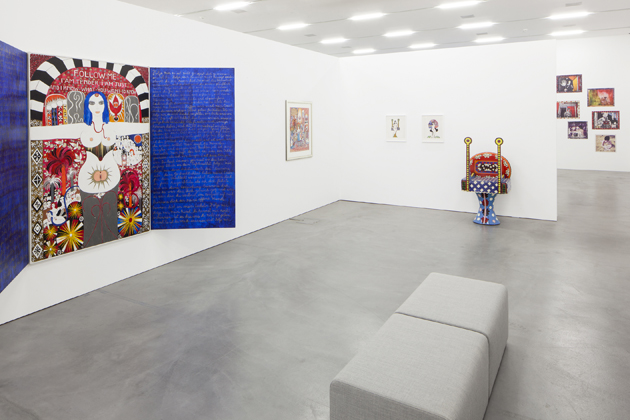
Displaying fifty years of work, the exhibition presents the universe of thorny subjects and issues explored by the American artist with her peculiar style and strong narrative power. Through throw colorful painting, drawing, collage, video sculpture and artist’s book, the “sex priestess” of contemporary art gives vent to striking images with explicit texts expressing ecstatic love, without worrying about the common, often hypocrite, sense of morality. The spiritual and physical union between the opposites concerning women’s sexual and intellectual emancipation (a research started before the first waves of feminism) and the act of making erotic love are key topics for this pioneer of art: a self-taught painter able to merge with her work, where private life and artistic poetics go together well; a “transfer” that led even to document her seven-year, total relationship with artist Dieter Roth in the famous artist’s book entitled An Icelandic Saga.
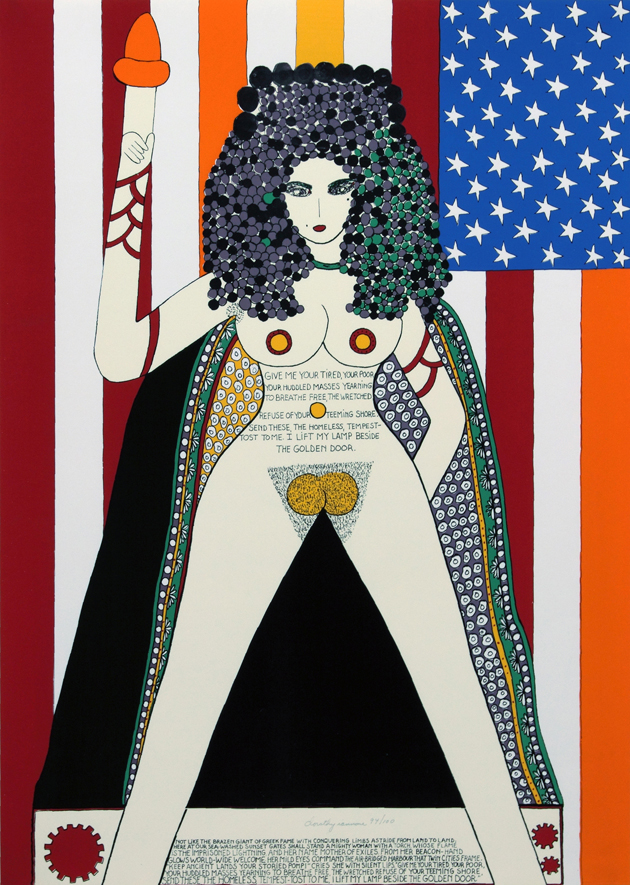
The starting point of the show in Switzerland is Censorship And The Irrepressible Drive Toward Love And Divinity (first released in 1982), a book created by Iannone in response to the censorship of her artworks at a number of exhibitions during his career, among them “Freunde” (Friends, 1969) at Kunsthalle Bern, when shortly before the opening her works were considered too scandalous and thus removed.
This significant comprehensive show of Dorothy Iannone’s work will run until 9th November 2014.
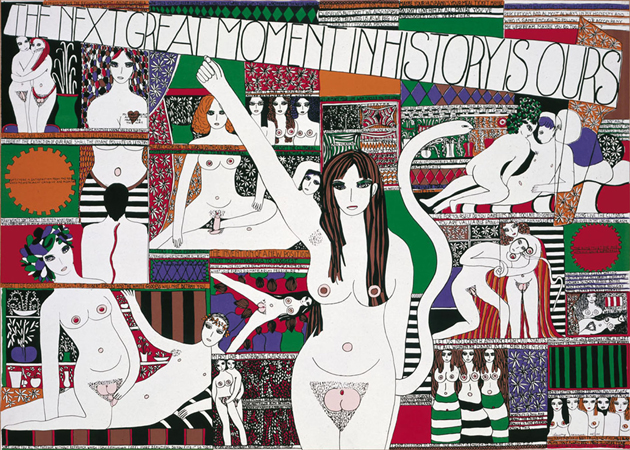

On the other side of the Iron Curtain, when communism ruled over the Eastern block and Poland was undergoing an unprecedented reconstruction through the rigour of Soviet architecture, the best artists and graphic designers of their generation found a unique way to warm up the hearts of post-war gloomy landscapes: transform neon lamps into the privileged means to create innovative and inspiring signs for public places.
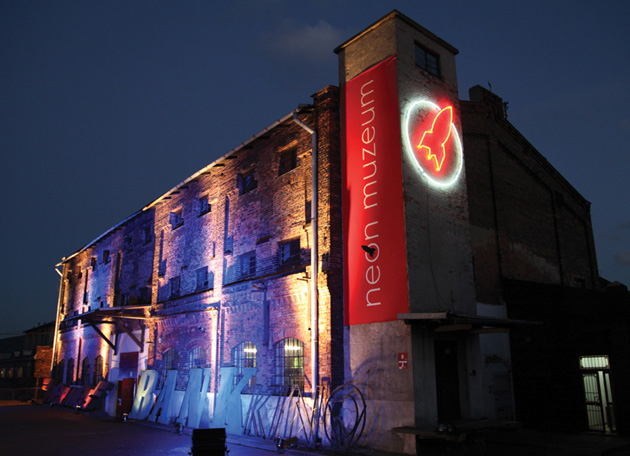
Neon signs weren’t a novelty in Europe. In Paris, the Champs-Elysees had already been illuminated by a huge Cinzano neon advertising sign in 1913, and right away the experiment was repeated in other cities. Nevertheless, no other country like Poland has ever transformed the potential of this tube and gas medium into a preponderant urban aesthetics. Restaurants, movie theatres, local milk bars, nothing escaped the contagion of neon lights. Even the most enduring symbol of the capital – the noble Warsaw’s mermaid – wasn’t kept out of the trend, demonstrating how much the city that had been wiped out by bombings needed an injection of warm, sexy and inspiring visual renewal.
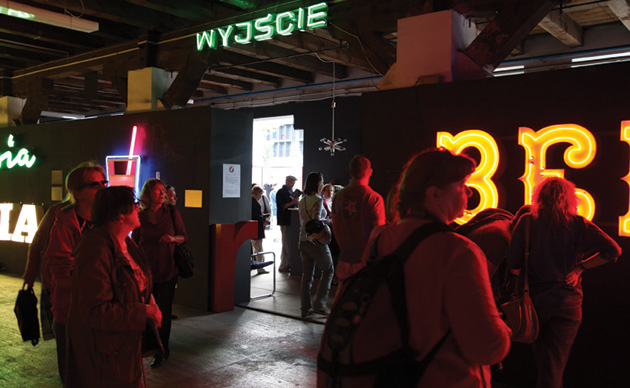

It’s a pity, then, that after the Wall’s fall this original language didn’t survive the impact with the Western world. Preserving this culture, then, has become the mission of the Neon Muzeum, a private institution founded in 2005 by David Hill and Ilona Karwinska to store the neons that were progressively dismantled in town. At the present time, the collection is made up of 50 neon pieces and 500 letterforms, which have all been restored, catalogued and promoted through an photographic exhibition by Ilona Karwinska that in the years have already touched several European cities.
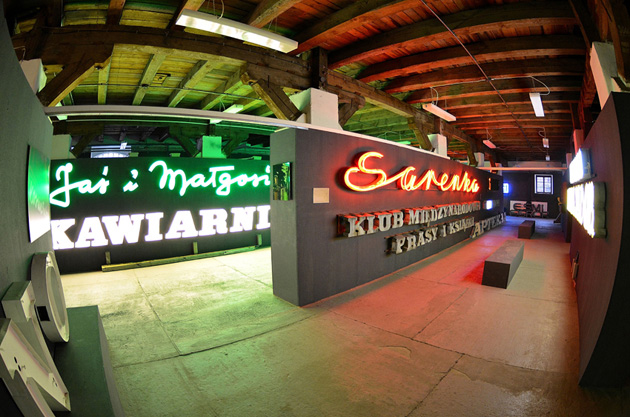
Based in the Prague neighbourhood, which is considered the most veracious among Warsaw’s districts, the Neon Muzeum has found its perfect environment in the so-called Soho Factory, a hub for creative talents founded on the ashes of an ancient power station. All around, design showrooms and studios – but also restaurants, food markets, fashion boutiques, etc… – are the most visible symptom of the city’s new energy, and recreate a contemporary landmark that spontaneously includes and relaunches this iconic heritage.
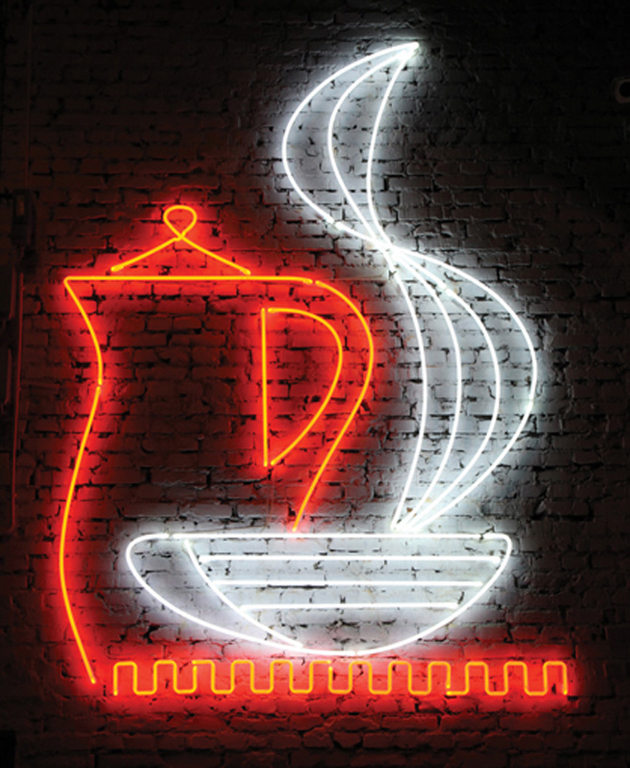
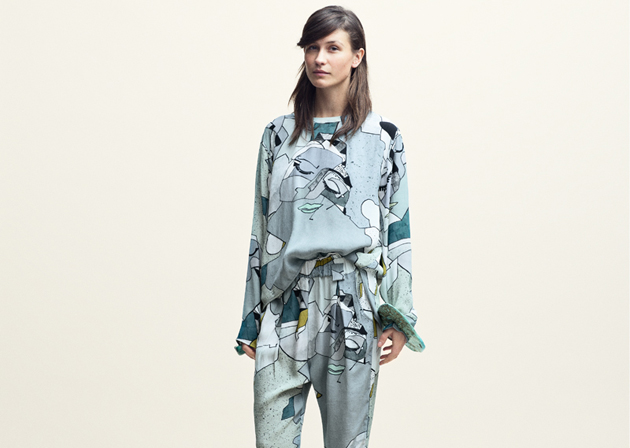
Seeing colorful and printed pieces on the Scandinavian catwalks is both an unusual and welcomed sight on fashion weeks, usually dominated by a more natural colure palette. Stine Goya is therefore representing a new, colorful take on scandinavian fashion. After graduating from Central Saint Martins in 2005 with a degree in fashion and print, the danish designer Stine Goya founded her own brand in 2006. The brand has, since its very beginning eight years ago, developed and grown into an international success, and is now being represented in 90 stores all over the world and awarded with both the DANSK Fashion Award for Best Upcoming Designer in 2009 and DANSK Fashion Award for Designer of the Year in 2011. Her love for vibrant color, exclusively designed prints and sculpturally shaped pieces has become significant for the brand’s design aesthetic and the ambition is to inspire women to express themselves and to step into an authentic character.
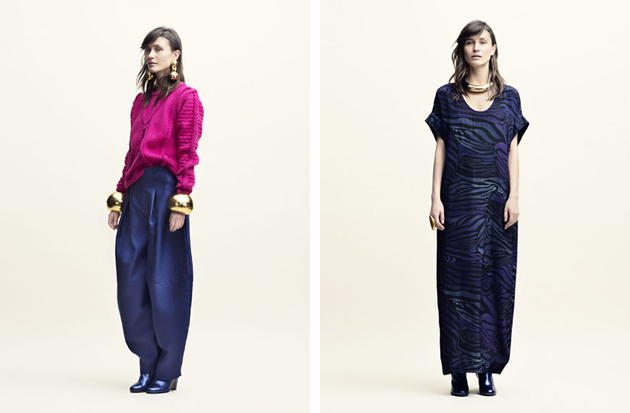
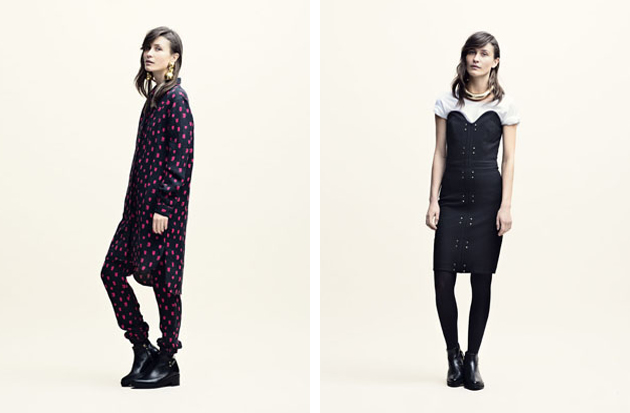
The autumn/winter 2014 collection is no exemption. With wearable and interesting pieces in colors, prints and innovative cuts and structures, the collection stays true to the brand’s design philosophy and the result is a fall line that feels very much Stine Goya. Besides wanting to inspire women, Stine Goya also hopes to influence the direction of Scandinavian fashion: a task we believe she may already be on her way of completing, completing just by staying true to her original design ideas and continuing to add that wished-for splash of color that lights up Scandinavian catwalks.
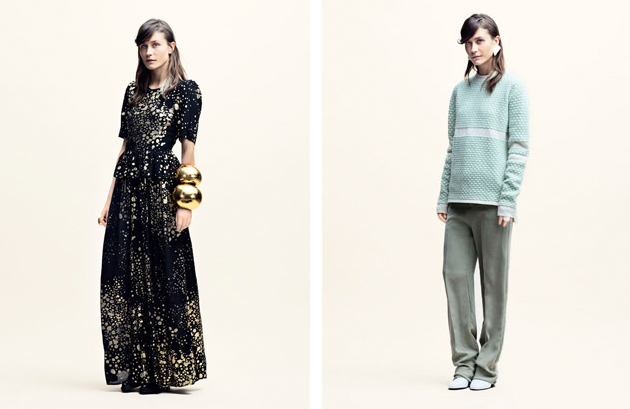
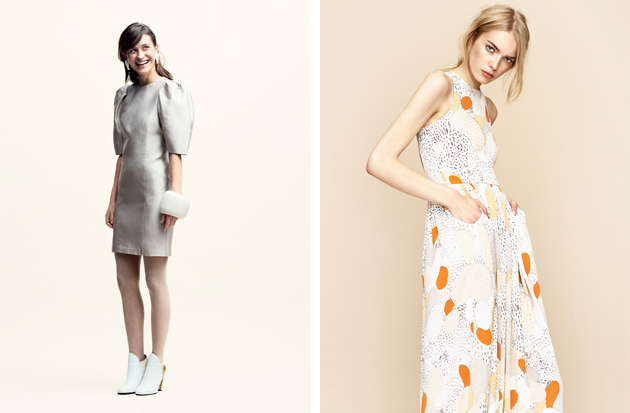
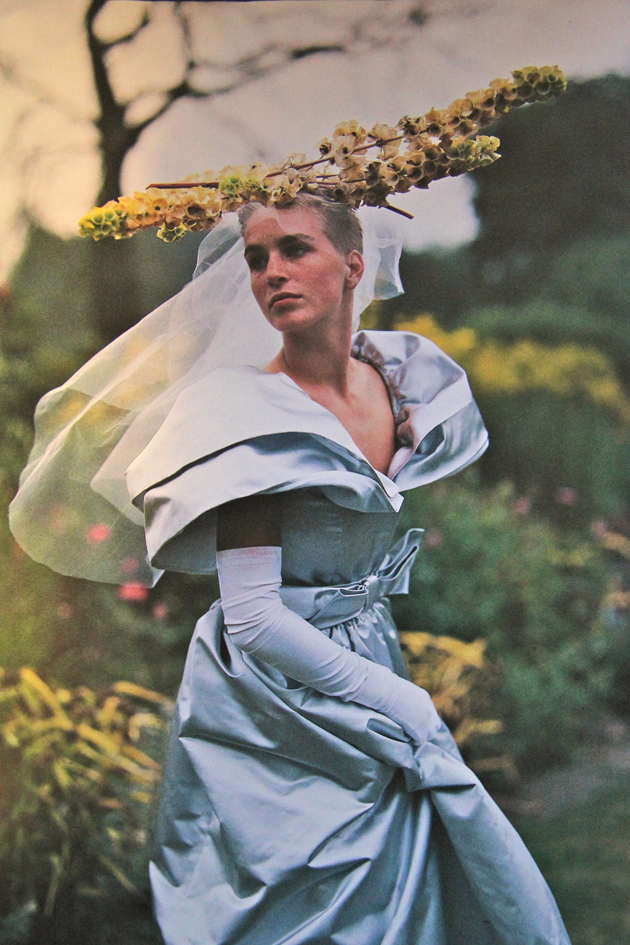
The word that can best describe Gina Fratini’s practice, and her life as well, is, for many reasons, ‘natural’. Natural, for her, meant to get involved in fashion; natural was to sense the potential, in a London still drenched in the swinging sixties, of flowing fabrics – only natural ones, of course – she had known in her years in the Middle East; and again natural was to develop close relationship with her devoted clients, who were ambassadors of her well recognisable, naively elegant style.
Despite the Italian sounding name, Gina Fratini is an all-British fashion designer who established her own fashion house in the middle of the vibrant swinging sixties in London. Born Georgina Caroline Somerset Butler, she owns her pen name to her second husband, an Italian artist Renato Fratini. The daughter of a government official, she was born in Japan, raised between the Middle East and India, but chose England as her basis, and soon became on of the ‘hot names of the British fashion scene’. Her interest in design took her to study at the prestigious Royal College of Arts, where she met dancer Katherine Dunham, who asked her to tour with her and her ballet company as assistant designer. Fashion, from them on, became her life. Two years after travelling the world with Dunham, she came back to London and set up her eponymous fashion house.
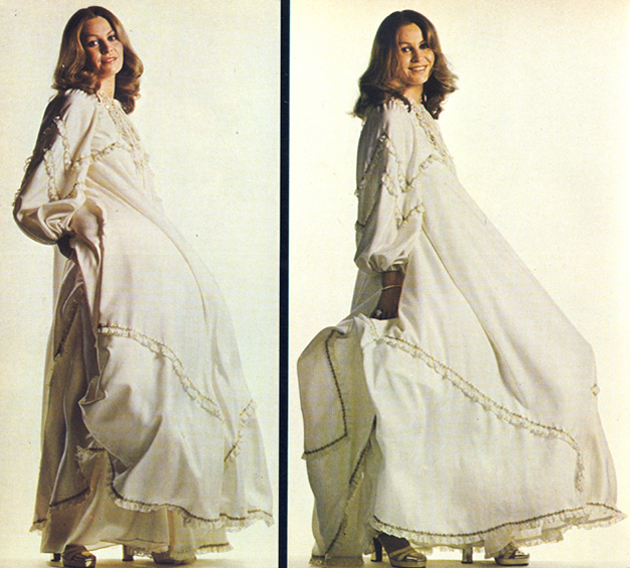
Gina Fratini made of flowing, multi-layered, soft dresses with delicate prints her signature. She has always been more fascinated by the qualities of fabric itself, than by the design and construction of clothes. All her inspiration came from the material she had in her hands, as she could nearly feel the potential of that fabric and enhance it with apparently simple dresses cut to enhance the intrinsic characteristics of the material she was dealing with. She had been capable of seizing the zeitgeist of her time, feeling the shift of taste from the close fitting, short designs of the 1960s to a more relaxed and retro look, which will become the image of 1970s ‘Britishness’, epitomised by iconic ‘hippy’ designers as Zandra Rhodes and Barbara Hulaniki. “I think I was the first to believe that amusing fabric is more important than close fit. I like soft fabric, but only natural ones like pure silk or pure cotton. I cut everything in bias and just let it fall into the person. I like movement. There’s nothing more fascinating than a woman flowing instead of walking.”
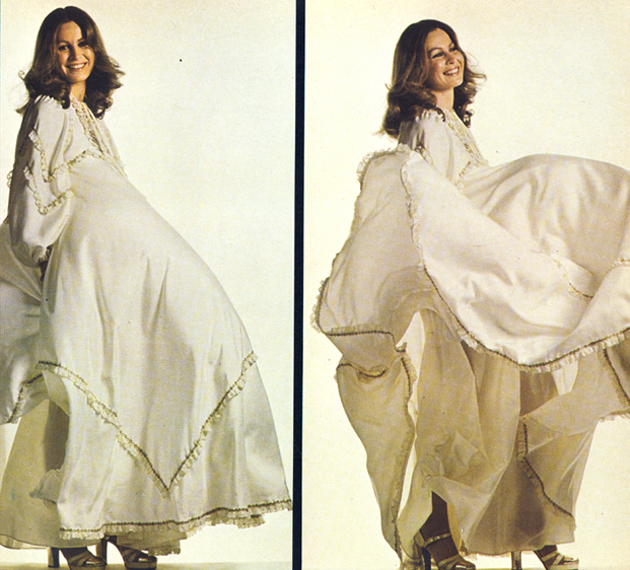
Fit was the issue of an argument with one of her famous clients, Princess Margaret. ‘She insists on a fitted bodice. That really goes against my grain, so we compromise on the issue.’ The list of personalities who dressed in Fratini’s creations is long and filled with ranting names, such as Princess Anne, Ursula Andress, Raquel Welch, for whom Fratini not only provided everyday clothes, but was also requested by the actress herself as her personal costume designer for the movie ‘Bedazzled’. Princess Diana continued to be faithful to Fratini’s designs even after the shut down of her fashion house in the 80s; and even Elizabeth Taylor, known for her preference for flowing, flouncy gowns and caftans, chose Gina Fratini to design the dress in which she married Richard Burton for the second time.
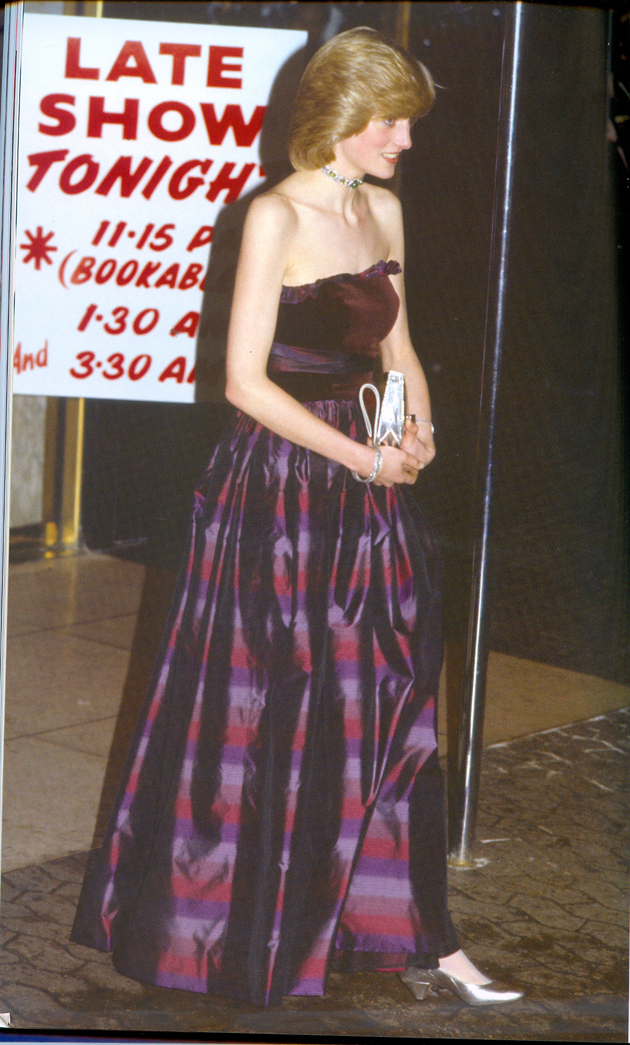
Gina Fratini firmly believed elegance had to be a way of life: an attitude coming out naturally every moment of every day, and not a superficial apposition to put on and off when the occasion requested. A position that recalls the ‘effortlessly chic’ style designers are seeking hard to convey in their contemporary collections, and that came out so easily from the layered, romantic look of Fratini’s creations. ‘I believe Elegantes want to dress up even if they are headed for the kitchen. A firm fashion attitude makes living palatable.’ Elegance as a way to appreciate life in apparently meaningless details; fashion as a gratifying delight to enjoy naturally, of course.
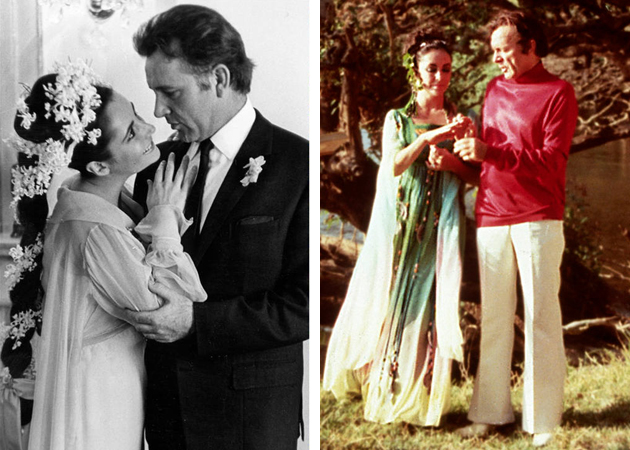
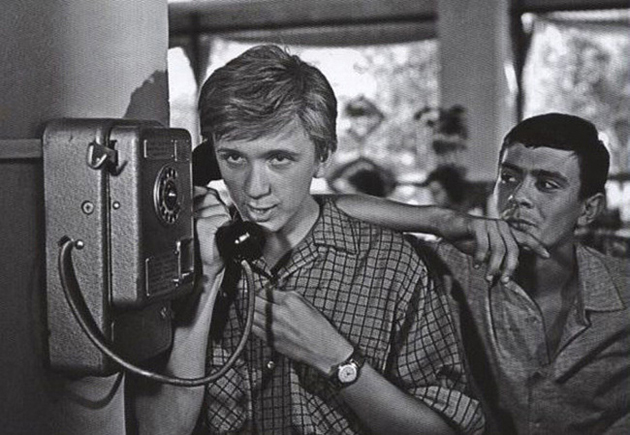
The 71st International Biennale of Cinema is a calm exercise of soft power at a time when the world is slipping into conflict. Balanced curation by Alberto Barbera has resulted in a festival which allows us to see every side, while sharing our suffering with others past, present and elsewhere. Foreshadowed by official discussions such as today’s conference on ‘Cultural Diplomacy And The Role Of Cinema’ at Lido, there are perspectives and characters from all over the world, such as with Ya Shagayu Po Moskve (Walking the Streets of Moscow) by Georgij Daneljia, a 60s film about a mixed group of Russians and Ukrainians meeting and hanging out in Moscow.
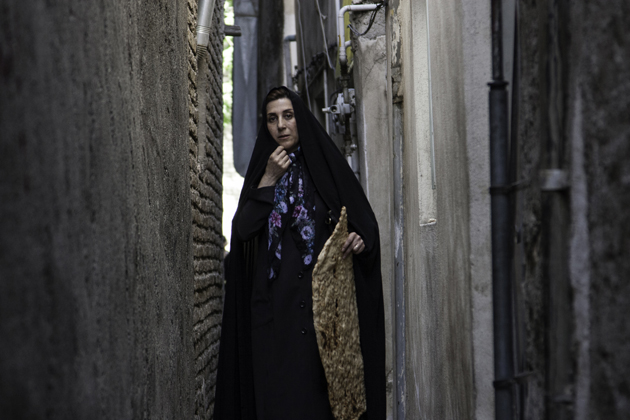
This entails a dangerous proposition, if we can identify with people we have never understood, that do not share our language or history, then perhaps we are all much more unified than our simplistic identifications with ethnicity, age and gender lead us to believe. This is not too far away from the theme revealed in Ghesseha (Tales) by Persian filmmaker Rakhshan Banietemad, who presents a variety of characters from the Iranian city, office workers, cleaners, intellectuals, illustrating their mutual drive toward romantic love. The festival format puts together movies from anywhere, exposing us to unfamiliar voices, in a way that is safe, but still essentially moving, because in the emotions we share with the characters and their circumstances we are never completely alone or separate. And perhaps we can even coexist with the multiple, contradictory ideas and ways of doing things presented to us in these stories.

The Venice Biennale includes a variety of initiatives to support young filmmakers and to find new voices from parts of the world that do not have a robust film industry. This year is the second edition of the Final Cut in Venice workshop, to support the postproduction of films from Africa, Lebanon, Palestine, Syria and Jordan. Rollaball by Eddie Edwards is a film made in Ghana about a team of soccer players who have been disabled by polio but still manage to play on old skateboards, their elation tempered by the reality of homelessness that most of them share. The point is to humanise the characters that so rarely get to add their voices to images rather than have them viewed as tragic and therefore inevitable. Other collaborations include a conference with UK Trade and Investment to encourage co-production between Italy and the UK as well as a meeting to look at various joint ventures between Italy and China.

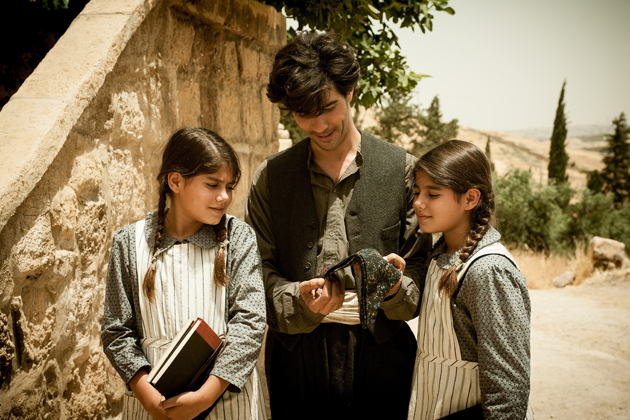
The American film Good Kill by Andrew Niccol shows us the banality of evil from the perspective of a soldier who has turned fighting into a 9-5 job through the weird world of drone warfare. German director Fatih Akin premieres his film, The Cut which is about a man trying to find his family in the wake of the Armenian genocide, while Naji Abu Nowar’s Theeb represents the historical importance of notions of hospitality, asking what may happen if you treat your worst enemy as your most cherished guest. Closing the event is Hong Kong filmmaker Ann Hui’s Huangjin Shidai (The Golden Era), a historical biography of one of China’s most famous female writers, Xiao Hong, an artist who moved from city to city, ultimately dying young. For Hui, the deconstructive style of narrative reveals the disjointed path of a genius confronting her fate.

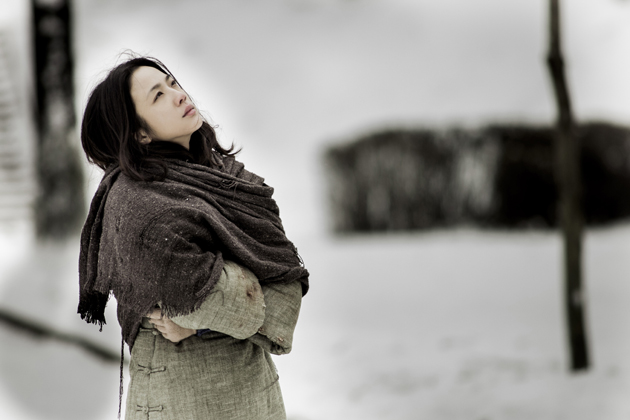
The 71st Venice Biennale of Cinema is an opportunity to be unmindful of social, geographical and political boundaries. Middle Eastern director Suha Arraf’s film Villa Touma received Israeli government film financing but later listed her country as Palestine, leading to some controversy. Her film and name are now listed in the online program without a country of origin. Unable to identify with one home for fear of offending the other, she has been left with no identification at all. But what this edition of the Biennale teaches us is that simultaneity is possible, if not durable. That we can in fact identify with a perspective a million miles away from our own. That film is a safe yet powerful means to show us the emotions of the other side and make us share in them – thus reducing the distance between us. Even if the experience is only momentary, the power in this gesture is lasting, we then know that we have cared about and felt for and cannot choose between diverse sides of conflict, but must find a way through differences to some kind of unity.
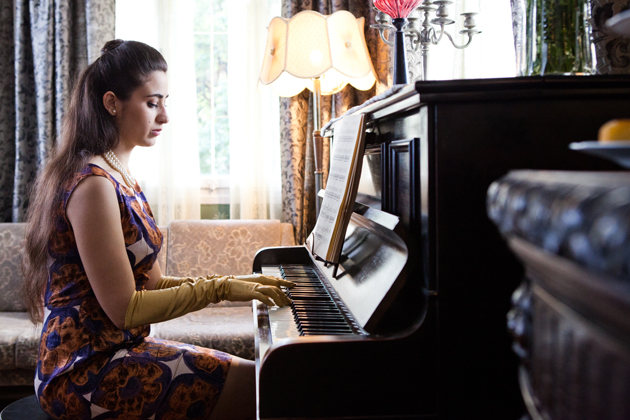
The 71st International Venice Biennale of Cinema closes this Saturday, the 6th of September 2014.
Philippa Nicole Barr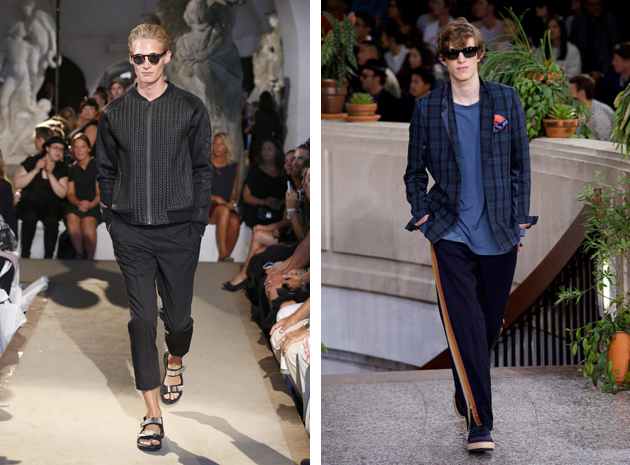
Sportswear has been a fashion trend that has evolved for the past few years and for Spring/Summer 2015 season, there appears to be no difference. However, the concept of sporty-chic on the menswear side, is not always the equivalent of womenswear. So how can sporty-chic be considered if translated to a male forum?
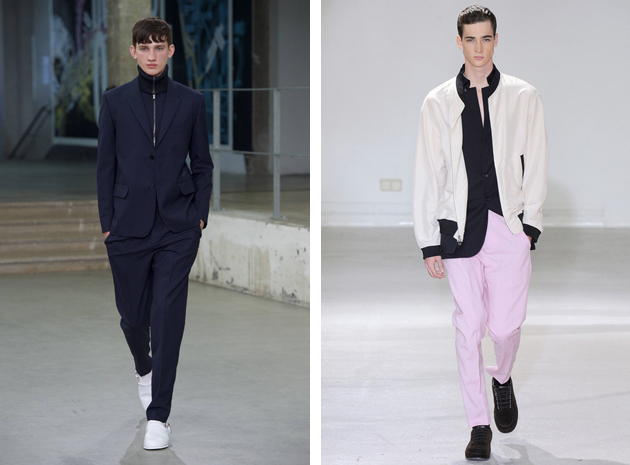
The key concept in a male wardrobe has, since the beginning of its sartorial birth, been to speak of character and class. In the past, it has given men a smaller spectrum of frivolity, giving, instead, greater importance to materials and cuts. Today, the focus is on being casual and laid back, as focus is more on leisure than class. Thus, the sporty-chic trend generally refers to a mix and match concept: bringing an element of sport within a dressier attire can add another dimension to a look and make it more interesting while not going over the top. When looking over the runways there were, however, a few concepts that could be equally translated for him and her.
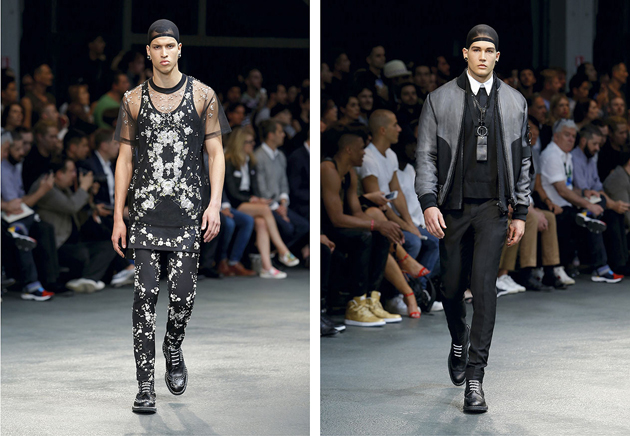
Mesh it up: The netted fabric was seen on many runways, layered in coat and jacket form over looser tops for a hard/soft combination while keeping the illusion of bareness within reach and giving it that 90s flair.
Sporty minimalism: the sporty minimalism is defined by relaxed silhouettes, clean shapes and minimal embellishments; whether it is tennis whites or boxy silhouettes. In short, keep an eye out for sporty clothing that looks both relaxed and clean as spotted at Calvin Klein.
The bomber jacket: The bomber jacket is a key piece to invest in for spring 2015. While you should try to preserve its sporty shape, army green was the color of choice as seen both on the streets of London and at Givenchy and David Andersen.
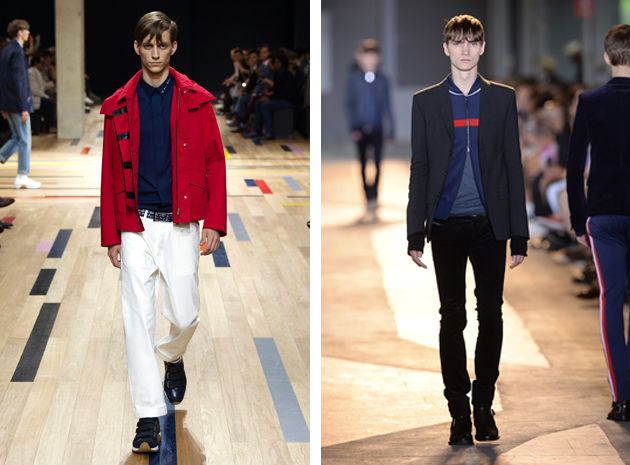
The difference for men and women, when looking at the sporty-chic term, is that you could see a head to toe look for women, whilst men only brought in elements necessary to give it a sportier twist. The essence of keeping things clean remains unchanged for men even with such a casual look as sporty-chic. But that might just be the name of the game.
Victoria Edman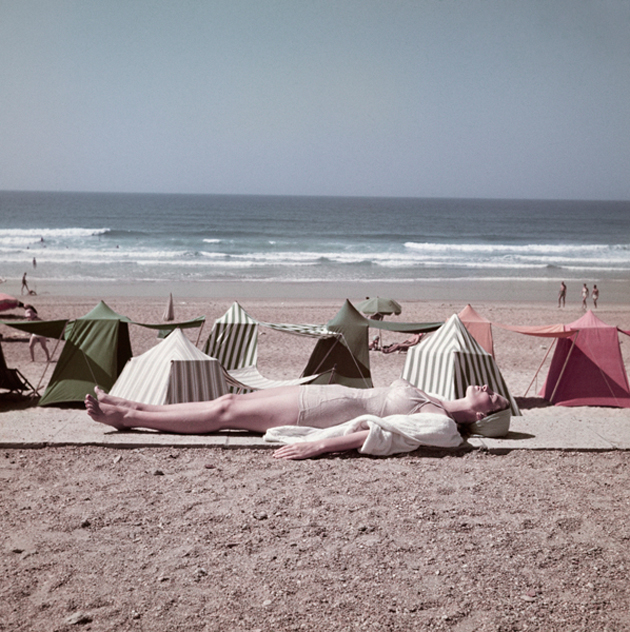
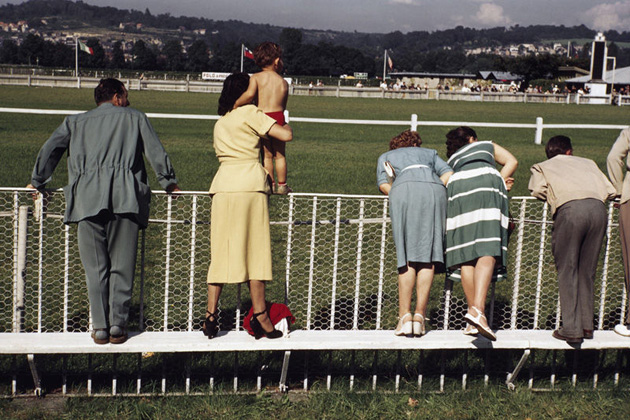
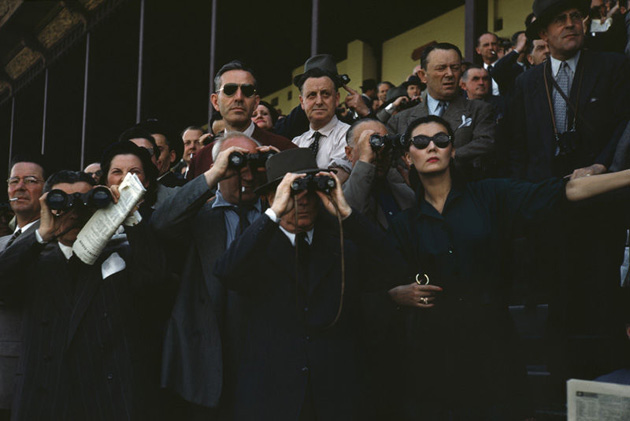




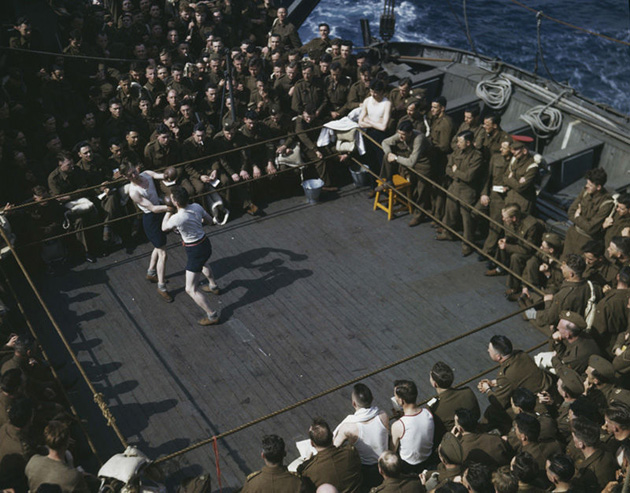
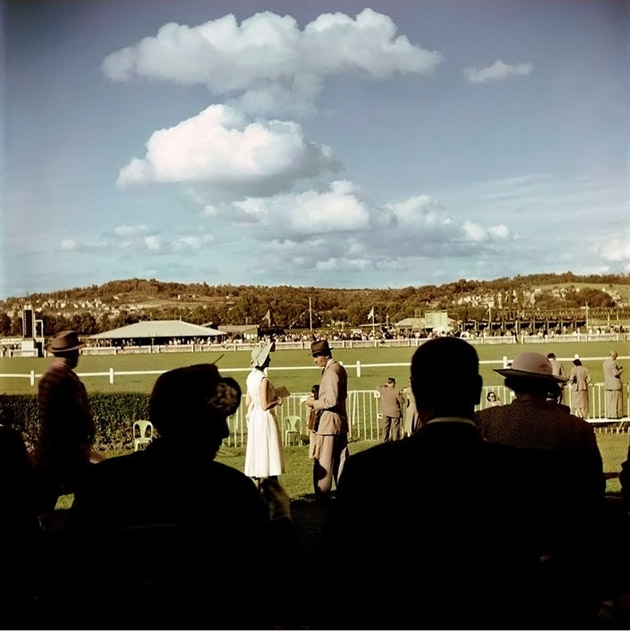
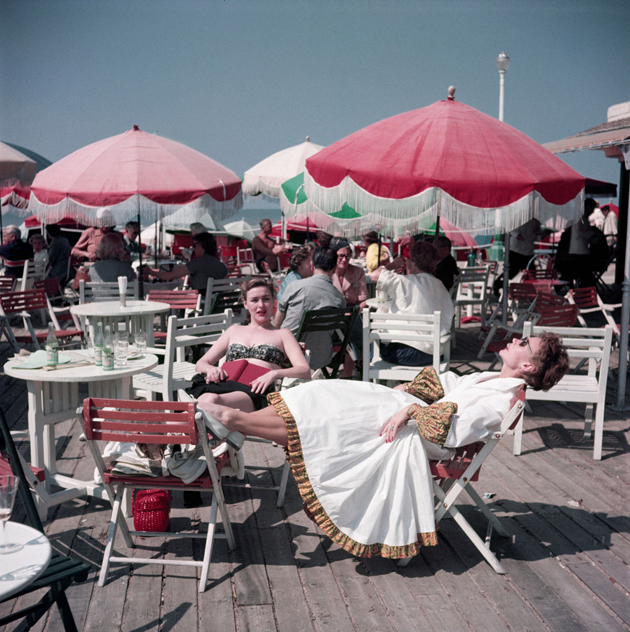

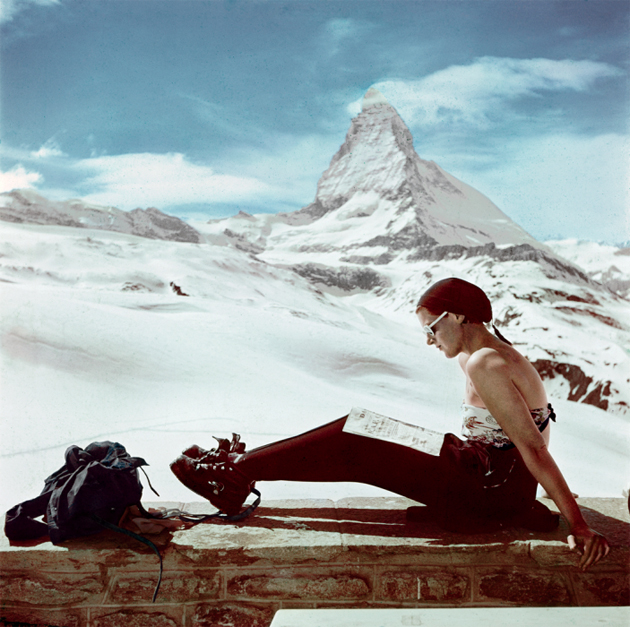
After this spring’s successful “Capa in Color” exhibition, the International Center of Photography brings a selection of Robert Capa’s photographs to Governors Island. presents a fascinating look into the color work of this master of photography, giving new insight into how tenaciously he operated as a photojournalist in an era dominated by black-and-white. Though there wasn’t a market for colour war photographs, Capa regularly shot in colour, as well as black-and-white. The colour images of his postwar career contain little of the political gravity of his war stories, instead reflecting a more peaceful and prosperous vision of the world. Some of these photographs were published in magazines of the day, but the majority have never been printed, seen, or even studied. Over the years, this aspect of Capa’s career has virtually been forgotten.
“At Governors Island: Capa in Color” will run until September 28th 2014.
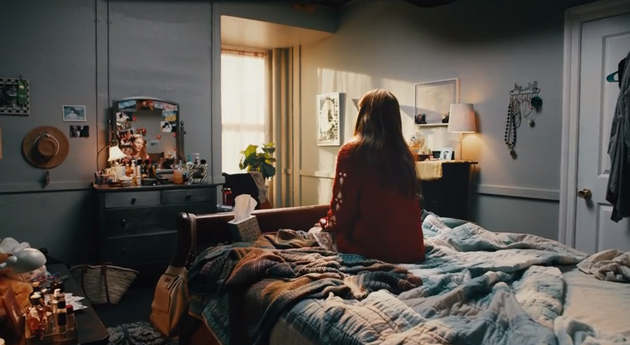
Do you remember those awful moments that required an enormous amount of willpower or, even worse, liquid courage to tell someone what you really meant? Well, those days seem to be over now thanks to a simple, yet unlikely very useful, app that could help you avoid saying you didn’t love someone anymore straight to their face.
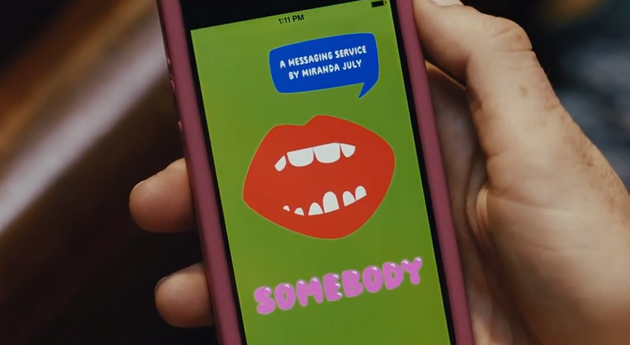
The discrepancy between means of communication available and the quality of what we communicate is subtly overturned in Miranda July’s new project, “Somebody”. The project consists of an app, a new messaging service, that works by sending a message you want to deliver through the nearest Somebody user, allowing you to avoid difficult conversations and awkward, gladly avoided situations. July says about the app: “Half-app/half-human, Somebody is a far-reaching public art project that incites performance and twists our love of avatars and outsourcing — every relationship becomes a three-way. The antithesis of the utilitarian efficiency that tech promises, here, finally, is an app that makes us nervous, giddy, and alert to the people around us.”
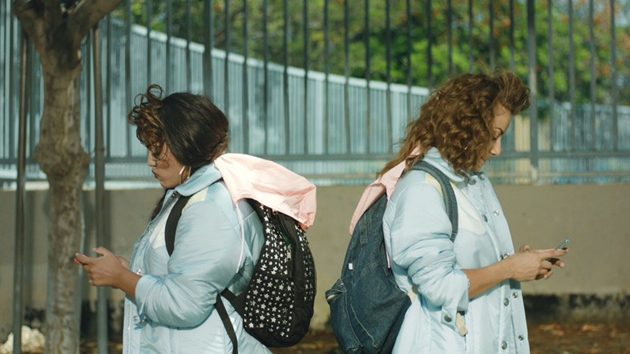
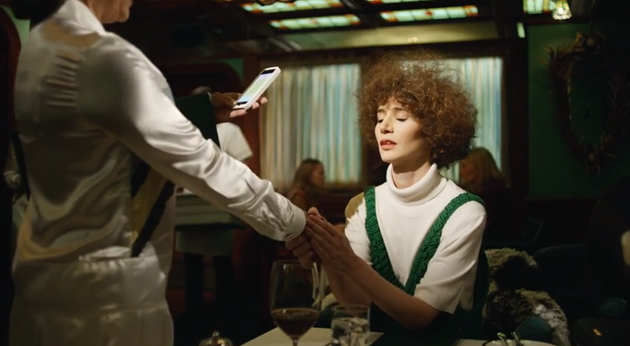
Somebody was created as the eighth commission in Miu Miu’s Womens’ Tales project, a short-film series by women directors who critically celebrate femininity in the 21st century, which includes contributions by Zoe Cassavetes, Giada Colagrande, Hiam Abbass, Ava Du Vernay, Massy Tadjedin, Lucrecia Martel and So Yong Kim. The Somebody short-film shows how the app works in a delightfully bittersweet and subtly ironic way, while it also displays Miranda July’s unique ability to capture the strange tenderness of contemporary relationships: “Jessica wants to tell Caleb she can’t be his girlfriend anymore. She opens up Somebody, types in the heartbreaking message, and selects Paul from a list. Paul is in the park. Paul’s phone dings. He eyes Caleb having a picnic. Paul delivers the bad news—as Jessica. Eyes bawling. Arms flapping. Caleb is devastated. The Somebody app then totally saves Yolanda and Blanca’s friendship, makes Jeffy’s marriage proposal to lonely Victoria, and initiates a curious ménage-a-trois between two prison workers and a parched potted plant named Anthony.”
Rujana RebernjakBlack and white is a trend that will never go out of style so add some essential pieces to your wardrobe and reinvent and re-use them season after season.
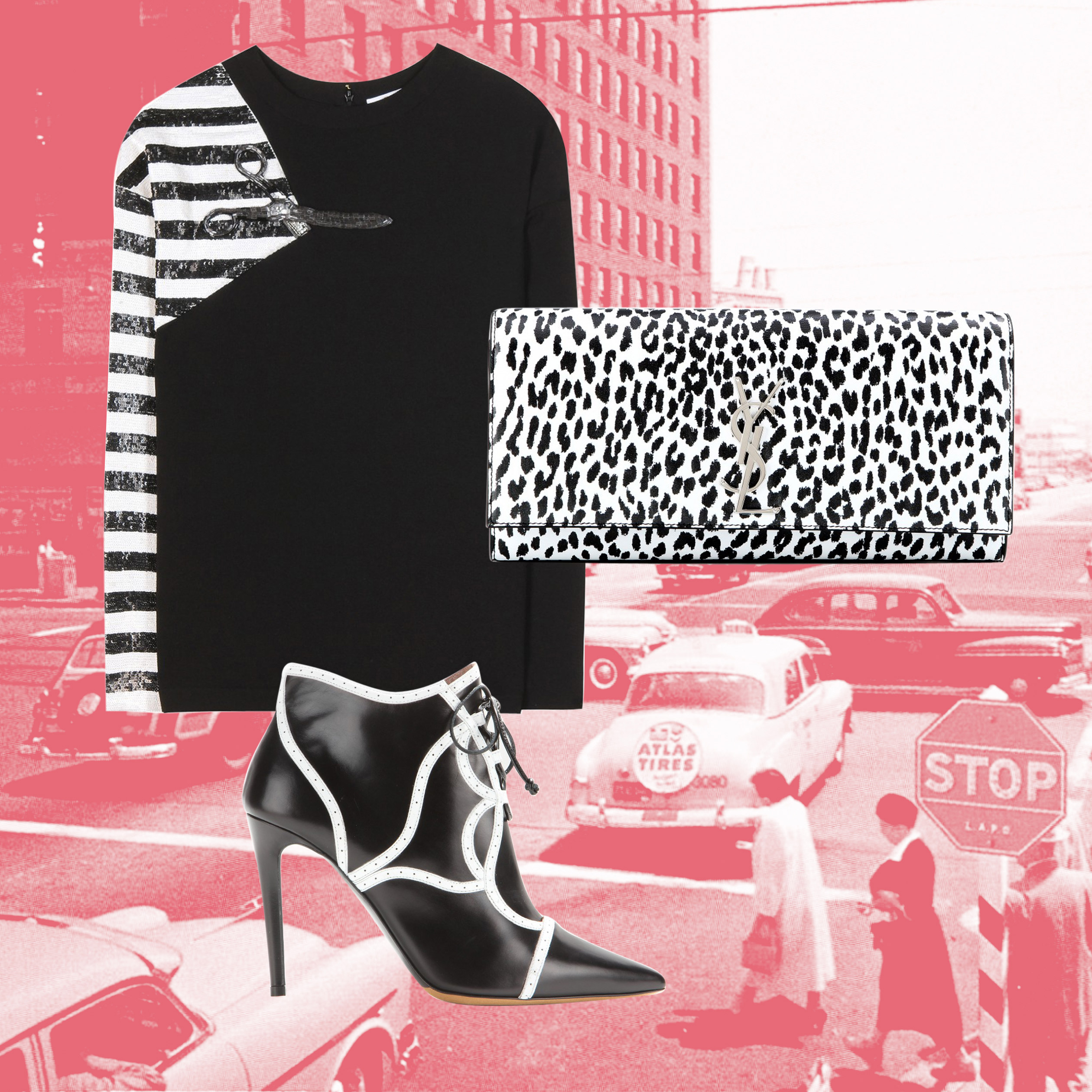
Styling by Vanessa Cocchiaro